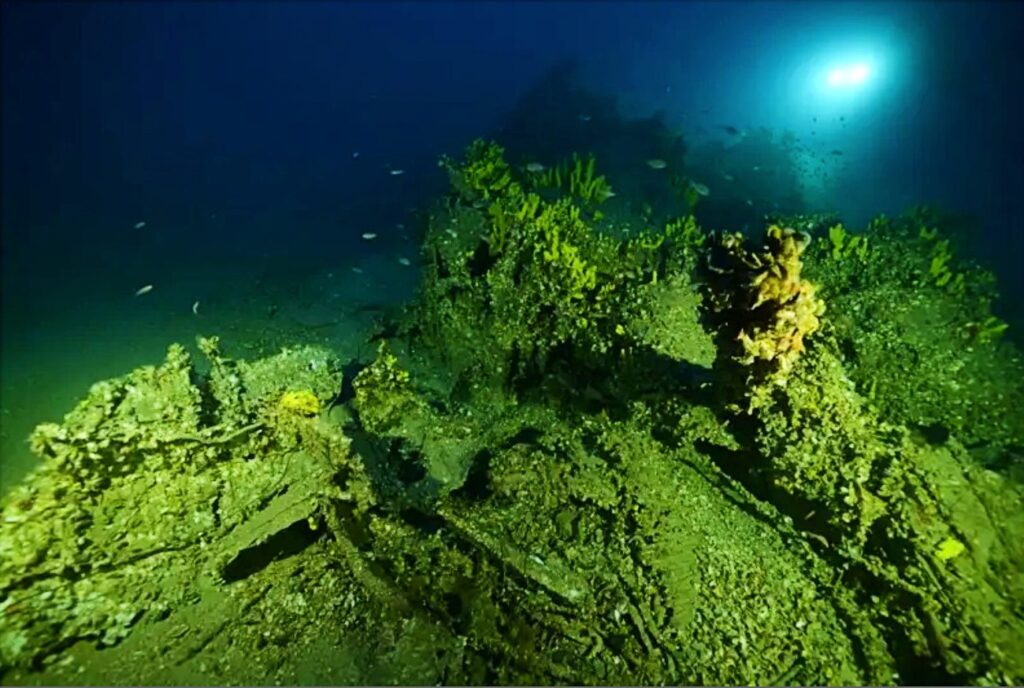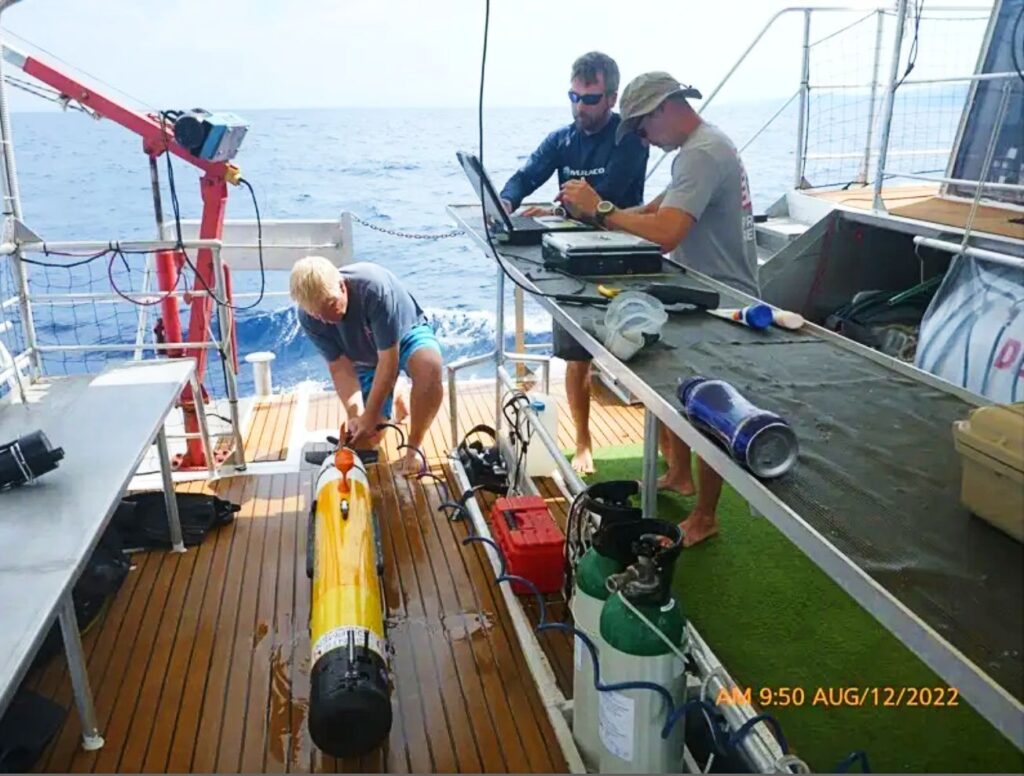Five US heavy bombers that crashed in the Adriatic Sea during World War Two were located and dived off Croatia this summer, it has been revealed – representing the biggest underwater aircraft discovery to be made by Project Recover and the University of Delaware.
Project Recover, which is dedicated to locating the remains of US service personnel who have gone missing in action (MIA) around the world, says that it will soon be adopting a time-saving “machine-learning” approach to pinpoint seabed anomalies for the team’s scuba divers to investigate.
Also read: Free app samples Adriatic wreck dives
The two-week Croatia mission, carried out in co-operation with local technical divers in August, revealed five crashed Consolidated B-24 Liberators, with three of them positively identified as being linked with 23 crew on Project Recover’s MIA list.
The wrecks lie at depths of around 90m, and the divers were surprised to find that a number of the aircraft, expected to be badly broken, had largely intact engine-cowlings, propellers and wings.

The 24sq mile search area was not under German control during WW2, so was often used as a “ditching area” for US Army Air Corps crews flying aircraft based in Italy during the Allied advance. Thirty wrecked warplanes are reckoned to have ended up there.
The operation was led by Project Recover co-founder Dr Mark Moline and carried out with funding and support from the US Defence POW/MIA Accounting Agency (DPAA).
Forming part of the agency’s drive to develop new technologies for locating wreck-sites, it was the first mission on which Project Recover was able to mount sidescan sonar, magnetometer and an HR video camera onto a single AUV to scour the seabed – and produce a daunting amount of raw data.‘Well-trained computer model’

Dr Moline is a professor of marine studies at the University of Delaware, where machine-learning specialist Dr Leila Character has been developing algorithms that she says can pick out potential wrecks from massive data-sets far more quickly and accurately than was possible before.
“The aircraft that we are looking for are rarely intact, which requires more than just our human vision to interpret,” says Dr Character. “A well-trained computer model can reduce time analysing AUV-collected data by 90%. What used to take five hours will take 45 minutes or less.”
By feeding millions of seabed images based on previous missions into the computer, it is learning to identify reliably any pattern that might suggest a wreck’s presence. A working model of this aircraft wreck-finder is expected to be ready within six months, after which it will be refined in operation.
For last summer’s expedition, however, human legwork remained all-important. “Prior to an expedition like this, we conduct research and collect the historical documentation for as many potential losses in the vicinity as we can identify,” says University of Delaware historian Colin Colbourn.
“This process, aided by local information and DPAA’s researchers, proved to be essential, as we were able to definitively identify several of the aircraft through the small details left in the historical record.

“Thanks to our partnerships, this work in Croatia represented a best-case scenario,” says Colbourn. “In only a few days on-site, we went from scientists and engineers conducting the search using AUVs, followed by divers and archaeologists investigating the wrecks, to identifying those aircraft with historical documentation.”
Project Recover intends to return to Croatia for further searches, some based on tip-offs from local fishermen and divers as well as military records – but to use the computer model to accelerate data-analysis.
Formerly known as the BentProp Project, Project Recover began its missions in Palau in 1993. Working with host nations and the DPAA it has located more than 50 US WW2 aircraft, 60% of them linked to MIAs, and helped to repatriate 14 of these, with 87 awaiting recovery. The task is massive, however – more than 80,000 US military personnel are reckoned to remain MIA since WW2.
Also on Divernet: Divers Recover WW2 Pilot’s Remains

